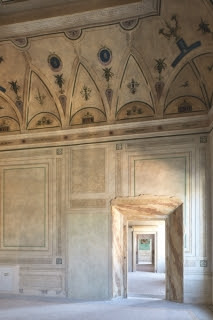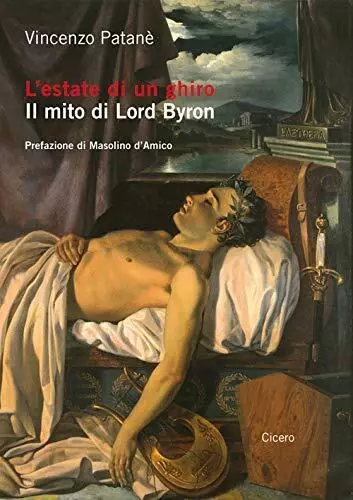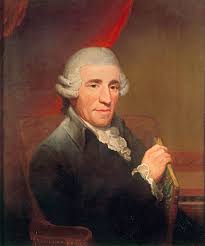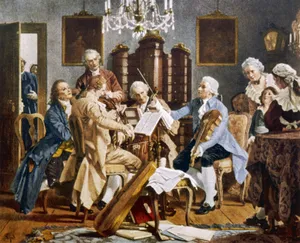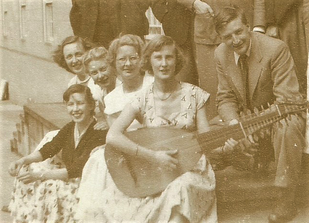
by Patrizia Poggi, Ravenna Latest Update 4.10.24: The Fondazione Cassa di Risparmio di Ravenna has definitely set the date for the inauguration of the Palazzo Guiccioli, which will now be on Friday 29 November for the preview with the press (national and international) and on Saturday 30 November and Sunday 1 December with the opening to visitors. A large representation of the British and American Byron Society will be present at the ribbon cutting.

On 26 October, the Byron Museum and the Museum of the Risorgimento will be inaugurated in Ravenna, in Palazzo Guiccioli, a noble palace in the central Via Cavour built in the late 17th century and purchased in the early 19th century by Count Alessandro Guiccioli, a prominent man in the economic, political and Napoleonic life of Ravenna.
Why this date? On 26 October 1860, Giuseppe Garibaldi and king Vittorio Emanuele II met in Teano, in southern Italy, (a small town near Caserta, in Campania). The King received from the General the Kingdom of the Two Sicilies conquered at the head of the Thousand and asked him to stop the conquest to avert a possible intervention by Napoleon III in Italy. Thus the Expedition of the Thousand (Spedizione dei Mille) came to an end and the unification of Italy took place.
Byron and Garibaldi are both symbols of the struggle against all oppression. The Hero of the Two Worlds gained this fame with his military exploits in both Europe and South America, Lord George Gordon Byron, the poet-soldier with his works exerted a great influence on European literature, inspiring more than any other artists, musicians and writers of the Romantic movement.
The opening of Palazzo Guiccioli is heralded by a magnificent exhibition of photographs by Giampiero Corelli, running in Ravenna’s Chiostro Dante until 25 October, entitled “Contemporary Byron”, which traces Byron’s heroic and sentimental journey, his dreams, needs, masks and obsessions and helps us understand how topical the Master of Romanticism is as a poet and character.
"Contemporary Byron" curated by Daniela Ferrari, will continue in Florence and Venice, building a bridge between the three cities the poet loved and celebrated. Professor Vincenzo Patanè introduced the exhibition by emphasizing the first Byron Museum in Italy is being built in Ravenna, a new museum itinerary like the residence of Newstead Abbey, not far from Nottingham. Here the poet lived between 1808 and 1814, one of the ancestral homes of the Byron family, rich in furniture, letters, manuscripts and portraits, plus his gilded wooden bed, pistol and the desk at which he wrote most of his best works.
Exhibition Credit: Giampiero Corelli
V. Patanè, journalist, film, critic and writer, is the author of the first absorbing and erudite biography in Italian of Lord Byron "L'estate di un ghiro. Il mito di Lord Byron | The Summer of a Dormouse. The Myth of Lord Byron" published by Cicero as well as other books on the poet.
The biography is a monumental work in which he inspects the letters, works and diaries and narrates his adventurous travels, love affairs, ante litteram stardom, political commitment and sincere participation supporting the underdog during the Industrial Revolution.
Byron was born in London in 1788 and died in Messolonghi, Greece, where he had gone to aid the Greeks in their fight for independence from the Turks.
Until he came of age, Byron lived in Scotland and England. In 1809 he began the Grand Tour, a long journey around the continental Europe, undertaken by the rich young people of the European aristocracy to enrich themselves with cultural knowledge and the history of the countries they visited.
He didn’t come to Italy and France, because they were involved in the Napoleonic wars, but visited other countries: Portugal, Spain, Malta, Albania, Greece and Turkey, until his mother's health deteriorated to such an extent that he had to return to his homeland, where he stayed for four years and then self-exiled.
English public opinion lashed out at him with accusations of free love, adultery, incest, homosexuality and many others such as fox-hunting. Attitudes unwelcome to the English aristocratic class. A lord who in the House of Lords dared to say that the life of a worker was worth exactly as much as the life of an aristocrat; his speeches in their defence were particularly unpopular to the English nobility. Deeply offended by the hostility that surrounded him, in 1816 he decided to leave the homeland again, never to return.
He went to Switzerland and then came to Italy, in four cities: Venice, Ravenna, Pisa and Albaro, a district of Genoa. Finally, seduced by the struggle for Greek independence, he went to Greece.
Having died for Greek independence, the British have forgiven him and for a couple of generations Byron was famous. He was a kind of star, a rock star, something you had never seen before. If we exclude the political sphere, for example Napoleon, no person has ever achieved such fame. So many people had at home souvenir items, some even kitsch: tea spoons, a watch, a print, because after the invention of lithography, prints were made cheaply and even the petty bourgeoisie could buy them.
Byron was thus the first real celebrity of the century and his myth fell to the ground around 1860/70 and quite forgotten until the Second World War. He has since been rediscovered and increasingly appreciated.
This year for the bicentenary of his death, in Italy alone there are more than 30 events that celebrate him. Let’s face it, today, people like Byron.
Certainly for literature, for decades and decades identified as the coryphaeus of Romanticism, now his most important works are considered ironic-satirical such as Don Juan, some cantos composed in Ravenna. But Italy, the country most loved, has so far held Byron's poetic work in low regard and many of his works are still unpublished. For instance, the complete editions of his two masterpieces “Childe Harold's Pilgrimage” and “Don Juan” date back many years.
In many other countries, however, for more than thirty years a "byronmania" has been reborn, so that it can be said that few characters, and not only in the literary field, boast such a high number of fans and collectors. Just think that in 1989 in Tiananmen Square, in Beijing some students advanced towards the tanks with a book of Byron under their arm or you can remember the poems inserted in the films: "The bridges of Madison County", "The Master", "Into the Wild" and one of Byron’s most famous poems "So we’ll go no more a roving" sung by Joan Baez, Leonard Cohen, Marianne Faithfull.
And then there is the character of Byron, an exceptional prophet of some principles that are affirmed after his death: love and respect for nature, love and respect for animals, the hatred of war except for those who fight for freedom, in fact he died for Greek freedom, the hatred for the cynicism of the powerful who hold the world’s ranks, the love and pleasure of travel immersing themselves fully in the reality visited, the love of transgression, a free and uninhibited sexuality, the rejection of homologation. Values that at the time were felt as strangers and fought, but extremely current in a Western society that has lost its anthropo-cultural archetypes, loss prophesied by Byron not with methodological rigour, but with the extraordinary strength of his poetry and his person.
Byron is very readable and very modern, not only in his restlessness and awareness, but above all in the way he renders and recreates it literally, so that the birth of the “modern conscience” seeps from his works.
The guidelines of his life: hatred towards hypocrisy, dishonesty, arrogance, harsh criticism towards the cynicism of the powerful linked only to the logic of profit and their own personal interests, energy, strength, transgressiveness and the love of freedom for individuals and nations. Freedom against despotism, but also the right of peoples to self-determination and the fight against the oppression of a conservative and archaic monarchy, causes repressed after the end of the Napoleonic Age, revived in Greece thanks to the work of Byron’s propaganda, who with his epistolary helped inflame Europe for the Greek cause.
Some decades later the witness would pass to Giuseppe Garibaldi.
Lord Byron arrived in Ravenna on 9 June 1819 attracted by Teresa Gamba, an 18-year-old countessa of Ravenna, very well educated, who had absorbed the warm feelings of patriotism that distinguished her throughout her life from the school and family environment. Already wife of the sixty-year old count Alessandro Guiccioli, Byron had once met her distractedly in the Venetian salon of Isabella Teotochi Albrizzi and a few months later in the salon of Marina Querin. He fell in love with her from the first moment. In a letter dated 24 April 1819 to his friend Lord Kinnaird the poet described Teresa as a woman as beautiful as the dawn and hot as the noon.

Lorenzo Bartolini bust of Teresa Gamba Guiccioli
Their relationship was not only sentimental but also intellectual. The cultural, religious and political environment of Gamba’s household had a considerable influence on the English poet’s soul and ideas. Pietro, brother of Teresa, together with her father Ruggero, between 1820 and 1821, convinced him to join the secret society of the Carbonari uprising movement in Italy. Byron supplied weapons and money to the Italian cause so much so that the police blacklisted him.
Together with Pietro, he left for Greece to help the people to free themselves from Ottoman oppression. Byron did not return, a meningitis took his life on April 19, 1824 at thirty-six years old. Pietro remained close to the poet in agony, attended his funeral and transported the body to England. Back in Greece, Pietro died of typhus in 1827 at the age of 27, a year before seeing a free Greece.
The news of Byron’s death left Teresa in despair and with her the world of international literature, which continued to value the genius of the poet. The countess wrote a biography of the poet who she had loved so much. She wrote the work in French, entitled "Vie de Lord Byron en Italie", but never published it. She enclosed the enormous manuscript - more than 1700 sheets - in a box together with the objects that reminded her of her love and kept for herself those precious memories, which are now exhibited in Ravenna.
In Ravenna, Byron experiences the most enthralling, romantic, Renaissance and patriotic sentimental adventure. Ravenna is the place of peace, love and poetic inspiration. In Ravenna, he passes every day by the tomb of Dante, looking for inspiration. He is moved by the spoils of the great poet. They share the same fate: both exiles, far from their homeland, both politically engaged.
Ravenna satisfies his subtle sensitivity for the beauties of nature. He spends a lot of time riding in the countryside and the Pineta of Classe | Pinewood of Classe more than other places seems to awaken romantic echoes in him
They are happy and fruitful years in an otherwise hectic life. Byron composed four works here: Cain, Marin Faliero, Sardanapalus and The Two Foscari, as well as cantos from Don Juan, Dante’s Prophecy and Tasso’s Lament.
And today, Ravenna, thanks to the Fondazione Cassa di Risparmio, pays homage to him by opening the Byron Museum, in Palazzo Guiccioli, where two hundred years ago the poet lived and experienced his love affair and political commitment, giving life and vigour to his canto:
«But I have lived, and have not lived in vain:
My mind may lose its force, my blood its fire,
And my frame perish even in conquering pain;
But there is that within me which shall tire
Torture and Time, and breathe when I expire…»
(Childe Harold’s Pilgrimage, canto IV, CXXXVII).
Palazzo Guiccioli also hosts the headquarters of the Italian Byron Society.
Ravenna, 31st August, 2024
By Patrizia Poggi
Ambassador of Knowledge and Flavours for Italia&Friends, Florence
Art Culture Tourism of an extraordinary country called Italy
Palazzo Guiccioli
Fondazione Cassa di Risparmio Ravenna
Ravenna Turismo
Emilia-Romagna Turismo
The Byron Society
foto di Vincenzo Patanè Photo credit: Giacomo Caruso
Photographs courtesy of PALAZZO GUICCIOLI, FONDAZIONE CASSA DI RISPARMIO, RAVENNA
Palazzo Guiccoli exterior photos credit Biserni
Additional link:
https://www.artculturetourism.co.uk/post/byron-200-byron-s-bash-and-vyronas-nottingham-agreement Newstead Abbey, April 2024
By Marysia Zipser

We recently attended a spectacular, and spiritually uplifting concert at St Mary’s Church, in the historic Lace Market area of Nottingham. So I just had to write about it here.
Carla Chiericallo and I had spent a leisurely hour at the Pitcher & Piano, High Pavement (converted church, originally built 1876) and then walked up to the Nottingham Chamber Music Festival "The Spirit of Love". I had last been there in July 2023 during the festival and experienced their Beethoven concert and Byron recital.
We so enjoyed the atmosphere and ambience of this lovely medieval church sited at the heart of the Anglo-Saxon borough for well over a thousand years.
Click to enlarge all photos
The Villiers Quartet comprises Katie Stillman, violin I, Tamaki Higashi, violin II, Carmen Flores, viola and Leo Melvin, cello. They perform all over Britain and are the Quartet-in-Residence at the Jacqueline Du Pré Music Building at Oxford University.
On this particular evening, the first performance was by Franz Josef Haydn (1732-1809) "Emperor" Quartet in C Major, Op 76 No 3 (1797);
The second was supporting Emma Walshe, soprano, who wonderfully sang Ailsa Dixon's (1932-2017) "The Spirit of Love". Three songs for Soprano and String Quartet (1987-88). Friday was the Nottingham premiere of ‘Spirit of Love’, and Ailsa Dixon's family had come especially to the city to celebrate the occasion;
And finally by Ludwig van Beethoven (1770-1827) String Quartet No 14 in C# minor, Op 131 (1826). All seven movements were played without pause, incredible.
Here are several quotes about this particular evening…
“At NCMF, we are very lucky to have such a diverse range of venue hosts for the Festival. St Mary’s in the Lace Market always provides a special atmosphere – the history and beauty of this venue always provides a dramatic backdrop for our Festival concerts.” - Carmen Flores
“Beethoven’s op.131 is an absolutely astonishing piece of music. Being one of Beethoven’s famous ‘late’ quartets, it is without doubt among his greatest works. Beginning with one of the most profound fugues ever written, it then takes us through a magical world comprising seven movements, without pause, bursting with more variety than one could possibly hope for.” - Leo Melvin
“Performances of my mother’s music are always special, since she had so little recognition in her lifetime, but to hear The Spirit of Love so beautifully realised by Emma Walshe and the Villiers Quartet was truly spine-tingling. They captured perfectly the transcendent quality of these songs, and left the audience holding their breath as the last shimmering note soared into the vaulting of St Mary’s in the Lace Market.” – Josie Dixon
Well done to all the performers, it was such a wonderful magical evening concert we will remember for a long time. Thank you Villiers Quartet, Emma Walshe, the Nottingham Chamber Music Festival for promoting this special event and to the beautiful St Mary’s Church. And of course to all the audience who were equally and joyously uplifted by the Spirit of Love concert - a very special evening indeed. We applaud you all.

Spirit of Love evening photographs by Marysia Zipser
Photos images Haydn (Britannica), Beethoven (Wikipedia) & Ailsa Dixon (from official website below)
Photo of Emma Walsh by Tor Hills Photography
More concerts for your diary:
Sunday 17th November at 3.30pm - Scottish Ensemble at St Mary' Church in the Lace Market.
Saturday 7th December at 7.30pm - A Christmas Celebration at St Helen's Church, Stapleford.
Please feel free to write any comments in the Comments box below. Thank you!
Marysia Zipser
Founder, ACT Ambassador
Links:



